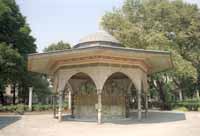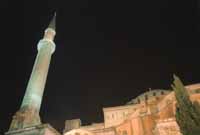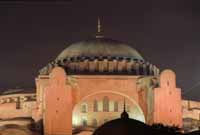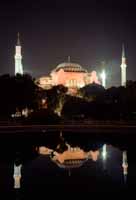
Whatever you call it, it's an impressive piece of architecture -- never mind that it was completed in 537 AD. Yes, this building is over 1400 years old.
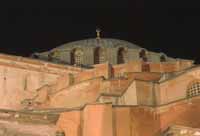
For 900 years, this was the greatest church in Christianity.
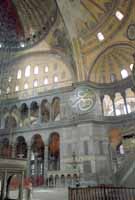
The large green shield is an artifact from the nearly 500 years that the Aya Sophia was used as a mosque. In 1935, Ataturk converted the building into a museum.
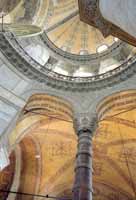
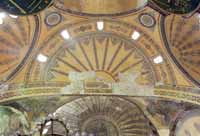
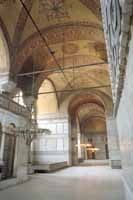
Look for the sensors placed along the cracks in the building. The idea is to give plenty of warning if the building makes any progress on its centuries-long crumbling and collapse.
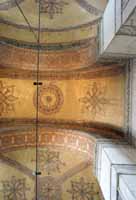
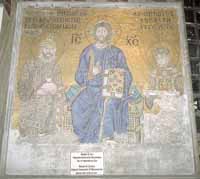
Apparently as each of Zoe's two earlier husbands died, their faces were replaced with the latest model. Obviously, Monomachus outlived Zoe.
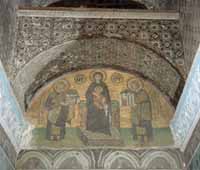
Constantine is offering up his namesake city, while Justinian hands over the Aya Sophia itself.
Narthex- A portico or lobby of an early Christian or Byzantine church or basilica, originally separated from the nave by a railing or screen.
Narthex.
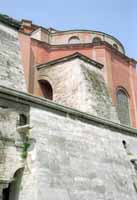
The dome isn't supported directly underneath by columns, giving the interior a huge sense of huge space. Instead, the load is spread out through the walls, which eventually started to crack, bulge and buckle. Still, quite a trick for 537 A.D.
Earthquakes are common here, but the reinforcements have, largely, stood the test of time.
